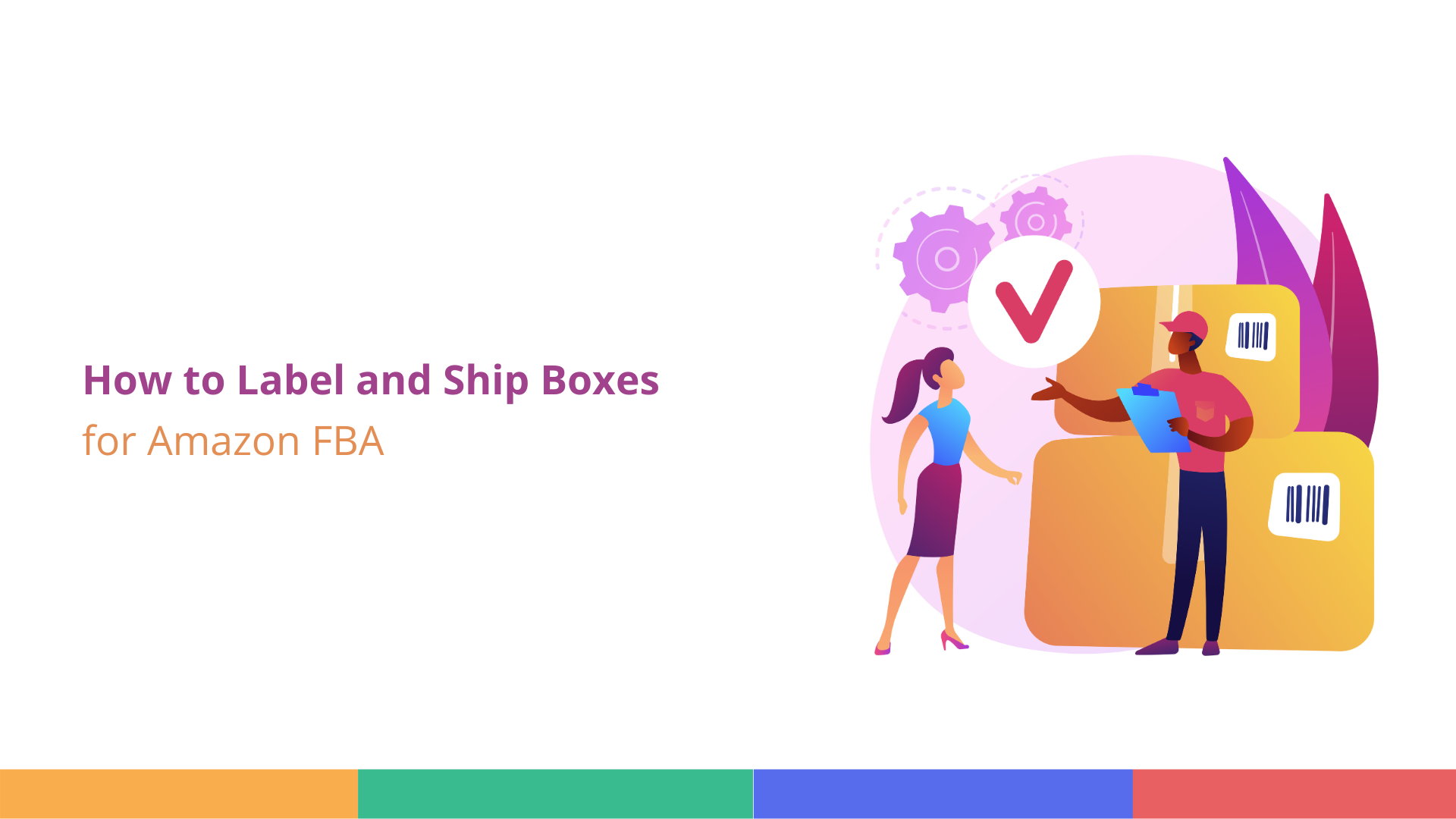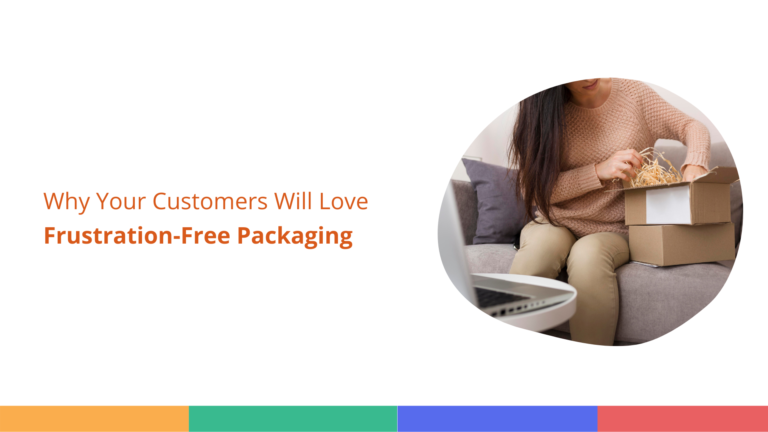Amazon’s Fulfillment by Amazon (FBA) program is a fantastic opportunity for sellers to leverage Amazon’s vast logistics network and reach more customers. However, to ensure a smooth and efficient process, it’s crucial to properly label and ship your products to Amazon’s fulfillment centers.
Proper labeling is vital for Amazon to accurately identify, track, and store your inventory. If your products are not labeled correctly, they may be rejected or delayed, leading to potential lost sales and unhappy customers. To ease the pain of the process, Amazon offers a labeling service that can simplify the process, but you can also choose to print labels yourself. On a side note, a lot of suppliers will add labels for you and ship directly to Amazon.
In this post, we have explored everything about Amazon FBA labeling, why it matters, how you can generate FBA labels, and what are the best practices for printing Amazon FBA labels.
Why You Need Shipping Labels for Amazon FBA and How to Label and Ship Boxes
Why Do You Need Amazon FBA Labeling
While Amazon’s Fulfillment by Amazon (FBA) program offers incredible opportunities for sellers, navigating the labeling requirements can be a challenge. Unlike Fulfillment by Merchant (FBM), where sellers handle their fulfillment, Amazon requires standardized labeling for all FBA products.
This streamlined approach allows Amazon to efficiently track inventory and identify each product across its vast network of fulfillment centers worldwide. With our handy FBA labeling guide, we’ll explore the nuances of FBA labeling, empowering you to focus on growing your Amazon business, one order at a time!
When shipping inventory to Amazon, you can use Amazon’s designated carriers or a carrier of your choice. Once you’ve decided what you’ll be shipping and determined the appropriate shipping method and carrier, it’s time for labeling and packaging. This process typically falls into two categories:
1. Small Parcel Deliveries (SPDs): These are individual boxes labeled for delivery and are typically used for smaller shipments sent through carriers like DHL, UPS, FedEx, or local postal services. For more information, refer to the “Small Parcel Delivery to Amazon” guidelines.
2. Less Than Truckload/Full Truckload (LTL/FTL): In this method, individual boxes are combined and palletized for delivery. For more information, consult the “Truckload Delivery to Amazon” guidelines.
After determining your shipping method, you’ll need to print the correct labels for your FBA shipment.
How to Create Amazon FBA Labels
Here are the key steps to create Amazon FBA shipping labels:
- Visit Amazon FBA Shipment section within the inventory section FBA Dashboard
- Now, select the shipment you want to make labels for, and click on the “Work On Shipment” tab.
- To print item labels directly, click the product edit button.
- To print the Box Label, open the existing shipment and enter the box dimensions in the blanks.
- Click Confirm and you will see the “Print Labels” option.
Packing and Securing Your Amazon Shipment
Before sealing your boxes, double-check that the shipping labels match the corresponding boxes, especially if the box numbers you’ve written will be concealed once taped shut.
The labels are numbered “box 1, box 2,” and so on, so keep them with the appropriate boxes. For added clarity, write the box number on both the inside flap and the exterior of each box.
Opt for sturdy boxes to ensure your books are well-protected during transit. Books can be heavy, so choose boxes that are small enough to avoid excessive weight when filled. You can purchase boxes at home improvement stores like Home Depot or Lowe’s, or reuse previously shipped boxes.
When it comes to taping, the standard approach is to use regular-width shipping tape and apply two strips over the center seam to secure the top and bottom flaps.
Some prefer to tape the side seams as well, which can reinforce the box and prevent moisture intrusion, but this is a matter of personal preference. Alternatively, you can use wide tape for added security.
If a box feels a bit flimsy, consider applying an extra strip or two of tape, along with the shipping label. A small investment in additional tape is worth preventing potential damage or loss of your book shipment.
Labeling Your Boxes for Amazon Shipment
With your boxes securely taped, it’s time to affix the shipping labels. Amazon’s peel-back labels are accompanied by a standard printed sheet containing the square barcodes. These barcode sheets should be covered with clear tape to protect them during transit.
We recommend taping over the entire label, including the barcodes and address information, to make them water-resistant and tear-proof. If you’re taping down the shipping labels themselves, ensure that the barcodes and address details are covered.
The labels should primarily be placed on the top of the boxes, but you can also put them on the sides if space is limited. Amazon prefers that labels avoid being placed directly on seams, but a minor overlap is generally acceptable as long as critical information remains visible.
If you’re reusing boxes, placing the new labels over the old ones can simplify the process.
Printing Amazon FBA Labels: Best Practices
When it comes to printing Amazon FBA labels, it’s crucial to use a thermal printer and avoid inkjet printers at all costs. The recommended label size is 30-Up Labels (Avery 5160/8160), as these are standard sizes for FBA labels. We’ve tried various brands, but none match the adhesive quality of Avery labels. If your FBA stickers fall off, you risk incurring charges from Amazon.
Ensuring that your labels can be scanned quickly and easily upon arrival at the fulfillment center helps prevent delays in receiving your inventory. There is no room for error with Amazon FBA labels. Here are some quick tips for printing them:
1. Print at a high resolution of 300 DPI or higher.
2. Always use a thermal printer; never use inkjet printers.
3. If your printer attempts to scale the PDF print area, manually set the scaling to “None” or “100%.”
4. Always use white, non-reflective label paper.
5. Always print labels with black ink.
Where to Find FBA Labels to Print:
1. Use an Amazon-generated PDF from Amazon.com.
2. Access the product labeling page while creating a shipment.
3. Print item labels directly from the inventory screen.
Labeling Tip: It’s challenging to reprint on a partially used page. All labels will be combined, so print a full 30-sheet. Save any extra labels for future inventory.
How Long Does Amazon Label Need to Last
Amazon FBA labels must remain legible and readable for 24 months. Inkjet printer ink can smear, get wet, or fade, leading to potential fees. Laser printers are better, but thermal label printers are the best option. The label must stick to the product for 24 months to avoid additional charges.
Recommendations:
- Choose on-demand printing to print only what you need
- Invest in high-quality toner and labels for long-term savings.
- We recommend Zebra 2844 model printers and suggest having a backup to maintain sales in case of equipment failure.
Read also: Mastering Cost Optimization: A Comprehensive Guide to Reducing Amazon FBA Fees.
Covering Extraneous Barcodes
Whether using recycled or brand-new boxes, there may be additional barcodes present. It’s crucial to cover or obscure these extraneous barcodes to prevent any misrouting of your shipment. You can use a permanent marker to scribble over them or cover them with blank labels. While this may seem excessive, it ensures that UPS or Amazon scans the correct codes, avoiding potential misplacement of your shipment and lost profits. Keeping a Sharpie near your shipping station can make the task of marking out unwanted barcodes more efficient after taping everything up.
Conclusion
Summing up, after going through the details provided, you should now have a comprehensive understanding of Amazon’s FBA packaging and labeling requirements. Adhering to these guidelines meticulously is crucial to prevent any rejections or callbacks due to damaged products resulting from improper labeling practices.




